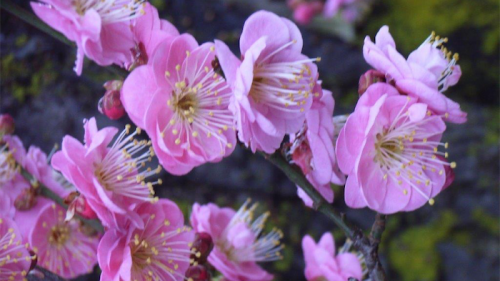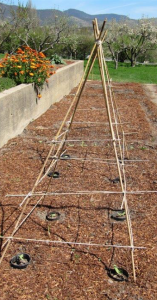
GARDENERS are eternal optimists. Winter may start on June 1, but are we depressed with the thought of a cold, possibly wet winter with plant-destroying frosts?

Not a bit.
We look at it this way; there are just 12 weeks to spring… with its daffodils, tulips and blossoms on trees. And who will record the first blowfly of the season?
Those fat, broad-bean seeds planted now will provide part of numerous nutritious meals in spring. Ah, spring is in the air for garden optimists!
WHEN it comes to fragrant blossoms though, we don’t have to wait until spring as the first blossoms will appear about the middle of this month.
They include the Japanese flowering apricots, Prunus mume “Rosebud”, growing to four metres by four metres or the slightly smaller “Splendens”.

Both have delicately scented, double pink flowers and will appear in a few short weeks.
In the early days of Canberra, these plants were in numerous locations in town centres and parks. Through years of neglect there are only a few surviving, for example at Majura Avenue next to Dickson College.
For late-winter, early-spring blossoms it’s hard to go past the flowering almond, Prunus dulcis “Purpurea”. It has striking reddish-purple double flowers with dark purple foliage in summer. An upright, vase-shaped tree, four metres by three metres, it’s suitable for the average-sized garden, if there is such a thing anymore.

I borrowed it from the library and discovered Berliner Humboldt’s (1769-1859) amazing story. There are more places with his name than any other scientist, explorer or naturalist. He has more than 300 plants and 100 animals named after him. In North America alone there are four counties, 13 towns, bays, lakes, mountain ranges and a river named after him. It’s compelling reading for anyone interested in plants and nature.
THE ABC’s horrifying TV program “War on Waste” recently reported that one billion take-away coffee cups end up in landfill annually in Australia. For gardeners, they make great propagation containers.
With a few drainage holes in the bottom, they’re ideal as they don’t dry out as fast as black plastic pots, which absorb heat.
Likewise, the used coffee grounds from a favourite cafe are great in the garden. For example, snails hate crawling over them.
For years I recycled the old Café Bar plastic coffee cups and propagated fuchsias in them.
Jottings…
- Pest repellant plant hint: coriander, (Coriandrum sativum) spray used on apple and pear trees in winter will help protect them from woolly aphid attack.
- Eucalypt leaves can be put on the compost heap, but first shred them with the mower.
- Prune the old wood out of hydrangeas and take cuttings using used coffee cups.
- Plant asparagus and rhubarb crowns in cow-manure-enriched soil.
Who can be trusted?
In a world of spin and confusion, there’s never been a more important time to support independent journalism in Canberra.
If you trust our work online and want to enforce the power of independent voices, I invite you to make a small contribution.
Every dollar of support is invested back into our journalism to help keep citynews.com.au strong and free.
Thank you,
Ian Meikle, editor




Leave a Reply